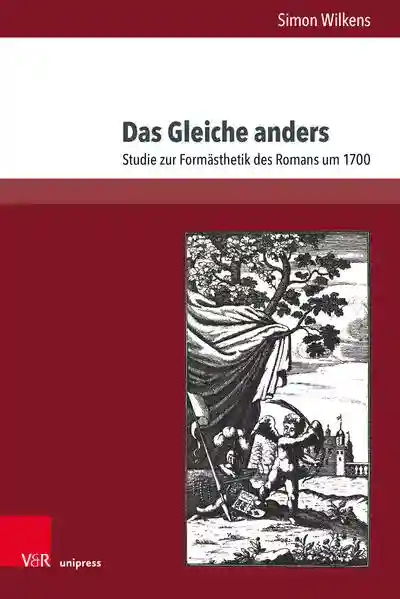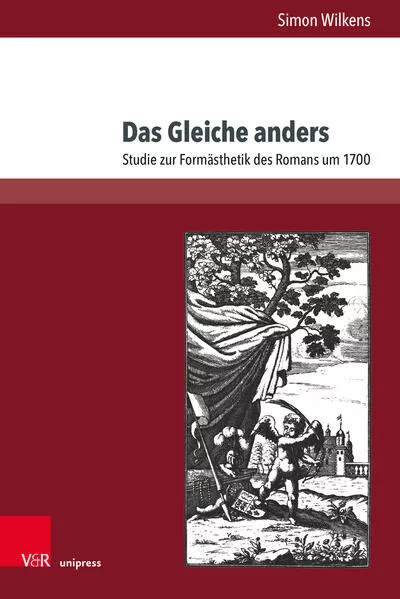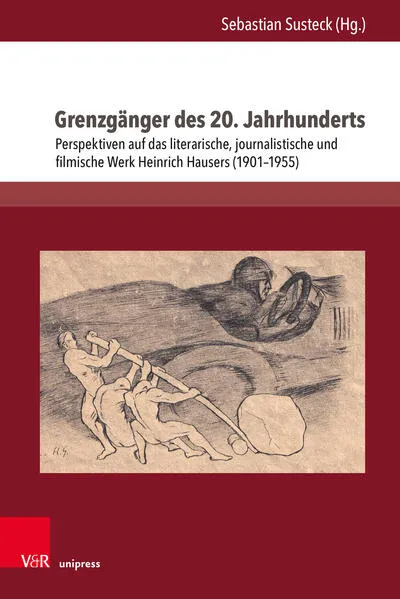Chronologie aller Bände (1 - 2)

Die Reihenfolge beginnt mit dem Buch "Das Gleiche anders". Wer alle Bücher der Reihe nach lesen möchte, sollte mit diesem Band von Simon Wilkens beginnen. Der zweite Teil der Reihe "Grenzgänger des 20. Jahrhunderts" ist am 23.01.2023 erschienen. Die Reihe umfasst derzeit 2 Bände. Der neueste Band trägt den Titel "Grenzgänger des 20. Jahrhunderts".
- Anzahl der Bewertungen für die gesamte Reihe: 0
- Ø Bewertung der Reihe: 0
Diese Reihenfolge enthält 2 unterschiedliche Autoren.
- Autor: Wilkens, Simon
- Anzahl Bewertungen: 0
- Ø Bewertung:
- Medium: Buch
- Veröffentlicht: 11.07.2022
- Genre: Roman
Das Gleiche anders
In konsequenter Anwendung eines relationalen Formbegriffes untersucht Simon Wilkens zwölf um 1700 entstandene oder erschienene Romane des vollen Gattungsspektrums – darunter das gesamte Romanwerk des galanten Autors Christian Friedrich Hunold, der »Schelmuffsky«, skandalöse Romane studentischen Milieus und die »Römische Octavia« des Herzogs Anton Ulrich. Erfasst werden die teils gewaltigen Ordnungsleistungen der Romane ebenso wie ihre nicht mehr kontrollierten Überschüsse. Präzise beschreibbar werden literaturgeschichtlich folgenlos gebliebene Innovationen, die nur über eine Kluft anders dominierter Entwicklungen hinweg auf Möglichkeiten deuten, die die Moderne bewusster und folgerichtiger wahrnimmt.
The book provides detailed analyses of twelfe novels written or published around 1700, among which all novels by the galant author Christian Friedrich Hunold, “Schelmuffsky” and “Die Römische Octavia”, the last big european courtly novel (6000 pages). All kinds of internal formal relations are being considered in order to give an account of the efficiency of the engaged structures as well as of the uncontrolled abundance of, for example, fictional characters or spatial indications. Influenced by the french courtly novels, instructed by the galant model or by the demands of a scandal-oriented public, the examined novels occasionally display sketches of formal solutions developped only much later under overtly modern conditions.
The book provides detailed analyses of twelfe novels written or published around 1700, among which all novels by the galant author Christian Friedrich Hunold, “Schelmuffsky” and “Die Römische Octavia”, the last big european courtly novel (6000 pages). All kinds of internal formal relations are being considered in order to give an account of the efficiency of the engaged structures as well as of the uncontrolled abundance of, for example, fictional characters or spatial indications. Influenced by the french courtly novels, instructed by the galant model or by the demands of a scandal-oriented public, the examined novels occasionally display sketches of formal solutions developped only much later under overtly modern conditions.
- Autor: Susteck, Sebastian
- Anzahl Bewertungen: 0
- Ø Bewertung:
- Medium: Buch
- Veröffentlicht: 23.01.2023
- Genre: Sonstiges
Grenzgänger des 20. Jahrhunderts
Heinrich Hauser (1901–1955) gehört zu den ungewöhnlichsten Autoren des frühen 20. Jahrhunderts. In einzigartiger Weise hat er die Rollen des Schriftstellers, Journalisten, Fotografen und Filmemachers mit denen des Reisenden, Arbeiters und Technikers verbunden. Der Sammelband präsentiert neue Forschungen zu dem Grenzgänger zwischen Literatur, Journalismus und Reportage, aber auch der Kunst und der Welt der Maschinen. Sein vielschichtiges Werk und seine hochproduktive Existenz verbanden die Zeiten vom deutschen Kaiserreich bis zur Bundesrepublik. Nach großen Erfolgen in den Weimarer Jahren wurde Hausers Leben vom Nationalsozialismus erschüttert, zu dem er sich ambivalent verhielt. Stets präsentierte er sich als Mann, der auf allen Feldern zuhause ist, und war doch von den Ereignissen getrieben.
Heinrich Hauser (1901–1955) is one of the most extraordinary authors of the early 20th century. He easily combined his roles as author, journalist, photographer and filmmaker with those of a traveller, worker and technician. This volume presents new findings on Hauser who crossed boundaries not only between literature, journalism, and reportage but also between art and machines. His detailed work and his highly productive being ranged from the German Empire to the Federal Republic. After experiencing great success during the Weimar Republic Hauser’s live was overshadowed by Nazism to which he had an ambivalent relationship. He always described himself as a man, who felt at ease with his different roles. However he was still driven by events.
Heinrich Hauser (1901–1955) is one of the most extraordinary authors of the early 20th century. He easily combined his roles as author, journalist, photographer and filmmaker with those of a traveller, worker and technician. This volume presents new findings on Hauser who crossed boundaries not only between literature, journalism, and reportage but also between art and machines. His detailed work and his highly productive being ranged from the German Empire to the Federal Republic. After experiencing great success during the Weimar Republic Hauser’s live was overshadowed by Nazism to which he had an ambivalent relationship. He always described himself as a man, who felt at ease with his different roles. However he was still driven by events.

